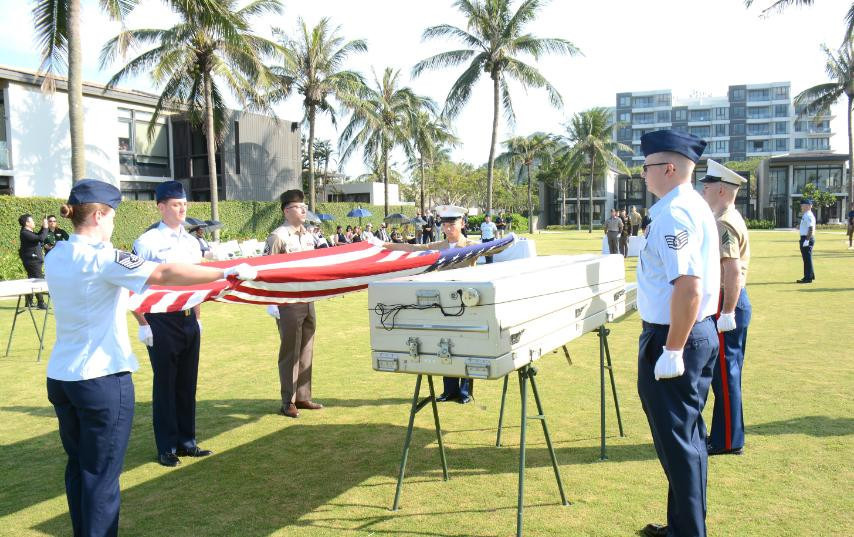
The 169th ceremony for the return of U.S. soldier remains. Photo: Ministry of Foreign Affairs
Vietnam and the United States held a solemn ceremony in Da Nang to repatriate the remains of American soldiers missing in action (MIA) during the Vietnam War.
This marked the 169th such handover, reflecting a long journey of reconciliation, normalization, and partnership between the former adversaries.
The event took place as Vietnam prepares to celebrate the 50th anniversary of national reunification and the 30th anniversary of diplomatic relations with the United States.
These milestones highlight the transformation of bilateral ties into a Comprehensive Strategic Partnership.
The ceremony was attended by the leadership of the Vietnam Office for Seeking Missing Persons (VNOSMP), and representatives from the Ministries of National Defense, Foreign Affairs, and Public Security.
From the U.S. side, participants included U.S. Ambassador to Vietnam Marc Knapper, officials from the U.S. Embassy, the MIA Office in Hanoi, American veterans, and members of the 158th joint search mission conducted in March and April 2025.
Vietnam officially handed over four caskets containing remains recovered through recent joint search operations carried out in Thua Thien Hue, Quang Tri, and Kon Tum provinces.

On April 15, Vietnamese and American forensic experts conducted preliminary examinations of the remains and concluded that they were likely linked to missing U.S. personnel.
The remains will be sent to a forensic laboratory in Hawaii for further analysis and identification.
Since the Paris Peace Accords were signed in 1973, Vietnam and the U.S. have collaborated in humanitarian efforts to locate and account for American MIAs. To date, these joint efforts have helped identify and repatriate the remains of 735 out of 1,973 missing U.S. service members from the war in Vietnam.
This achievement holds deep significance for the American public and government and contributes to broader cooperation in addressing war legacies, including the U.S.’s support in identifying missing Vietnamese soldiers, clearing unexploded ordnance, decontaminating dioxin hotspots, and assisting war-affected persons with disabilities.
Tran Thuong